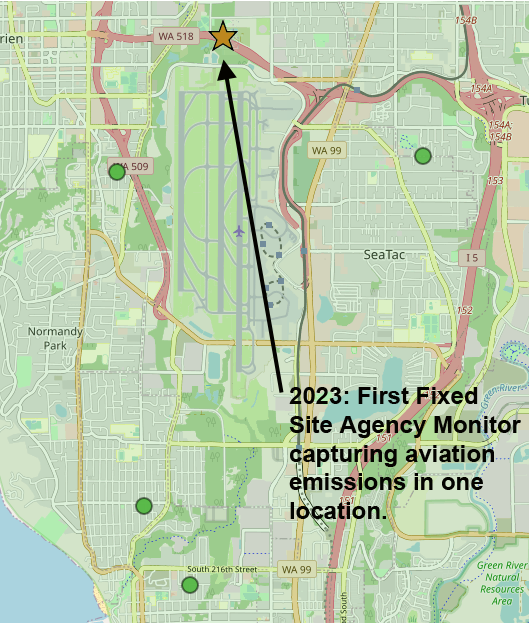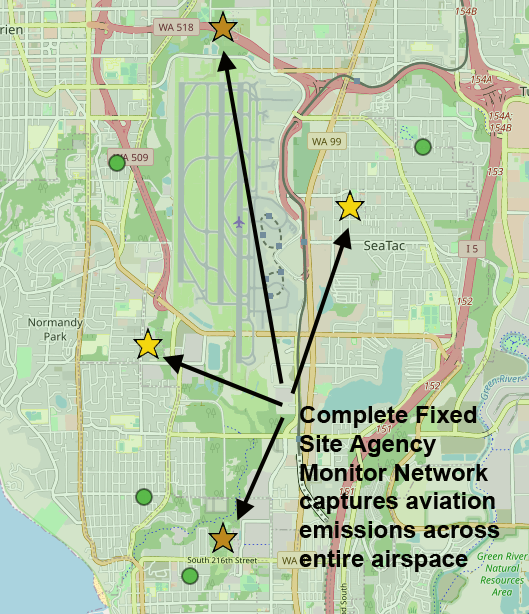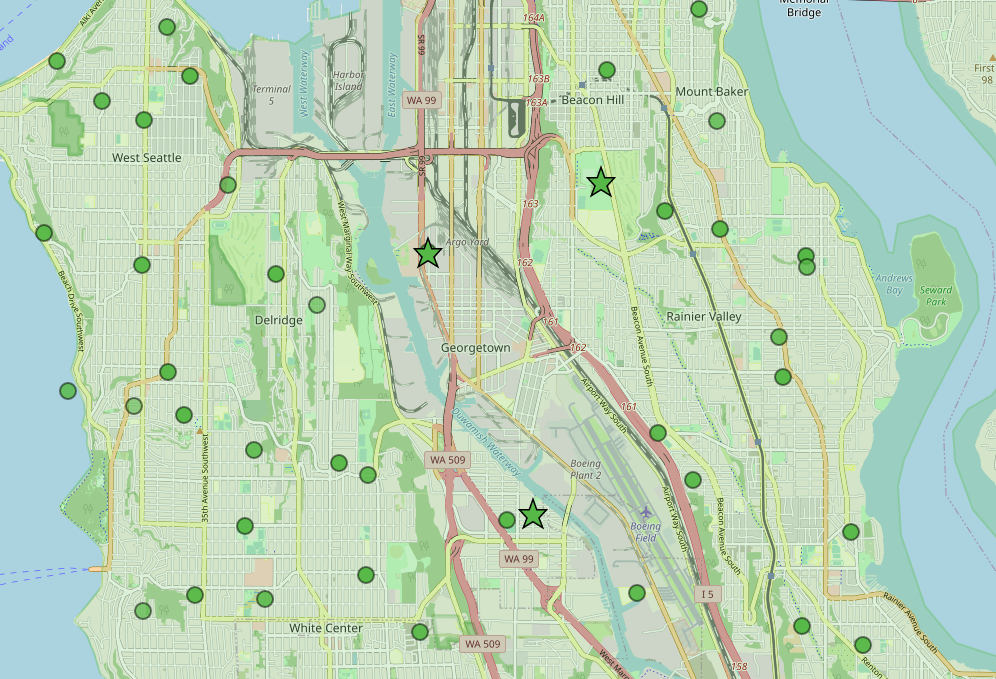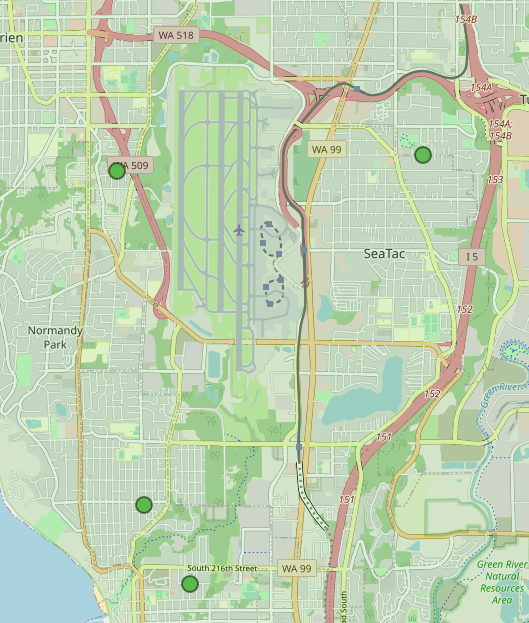What we have now
This is one portion of the current Puget Sound Clean Air Agency air quality monitoring network map. The stars belong to PSCAA. The dots are rando PurpleAirs that belong to members of the public, they are irrelevant to this discussion.
Airport
Scroll down on that map to the airport. Notice something missing? No big stars. There are literally no fixed-site PSCAA monitors anywhere near Sea-Tac Airport.
And whether they’re dots or stars, notice that all those sensors are green. Which means ‘Good’, right? Wow.

According to every map published by any arm of the State and Federal government the air over Sea-Tac Airport is almost always in the best possible range. And that is because none of those sensors do not detect ultrafine particles.
One node
Thanks to Rep. Orwall and Sen. Keiser, sometime in 2023 we will have one fixed site PSCAA monitor near Sea-Tac Airport which does detect ultrafine particles. Total cost: $412,000. Woo hoo!
Not sure where it will be sited, but on the new map, the dots (the PurpleAir sensors which don’t capture aviation emissions) will still show green. But the new Agency Monitor might sometimes show yellow, or even orange because it does detect UFPs.

However, one is not what researchers have been looking for. One monitor cannot possibly capture the complex spatial dynamics of particulates with so many types of aircraft in north flow, south flow, weather, seasons, evolving departure and approach procedures as operations increase, etc.
To do all that, you need at least four. Four fixed-site Agency monitors.
Four nodes
Researchers have told us since 1975 that they need multiple AQM sites to accurately sample the entire air shed and to accommodate future experiments.

Summary
So, three more stars, ,,,er,,, AQMs,,, at $400k a pop, equals $1.2MM all-in. And you can use the same mix-n-match grants to fund it. As always, the only ‘trick’ is getting PSCAA on board.
But this gets the complete network which can lead to regulatory authority, not just for Sea-Tac but for ultrafine particulates nationwide.
PS: One more very important thing: Research
These are not just sites to do ongoing sampling. They are spaces to do future research; experiments that researchers want to do, but have no place to do or have not been dreamed up yet. In environmental sampling, you often need time, as much as you need equipment. With many experiments, eg. detecting extremely small particles of various metals and gases, the sensor needs to gather data in one spot over a period of days or even weeks. That is simply impossible without fixed site monitoring.

